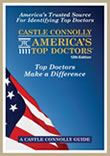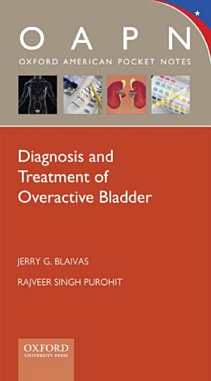Prostate Cancer Screening
Forget treatment, should you even look for prostate cancer?
Lately, there has been much in the news about prostate cancer and whether it is even advisable to screen for it (New York Times – Older Men Still Being Screened for Prostate Cancer). It’s strange to think that we have tools that help us look for cancer, but some have suggested that we not use them. It’s cancer right? Why not aggressively screen, diagnose, treat and aim for cure? Yet, even among doctors there is controversy about this.
The controversy about screening for prostate cancer is really two-fold. One component is that the PSA (which is a chemical produced only by the prostate in the body) and rectal exam, which are the tests used to look for prostate cancer, are not accurate. So, for example, the majority of men of who have an elevated PSA don’t have prostate cancer and the digital rectal exam, (where the doctor feels the prostate through the rectum) will often be positive in patients who don’t have prostate cancer. The opposite is true also. In fact, the majority of men diagnosed in the United States with prostate cancer have a perfectly normal rectal exam.
This part of the controversy is not very complicated. It’s all about probabilities and statistics. If your PSA is elevated, you have a higher risk of cancer and if it is not, your risk of cancer is lower. In fact, since prostate cancer screening was begun in the 1990s, there has been a dramatic increase in the number of men diagnosed with early stage prostate cancer.
But the larger, much more complicated question is – does early diagnosis and treatment of prostate cancer actually saves lives? 2 major studies have suggested that screening for prostate cancer may not save any lives and may come at the expense of some serious side effects. Primarily based on these 2 papers, a recent government task force on this issue has advised patients not to get screened.
We disagree. Ultimately, we feel that the decision about whether or not you should be screened, should be made by you and your doctor and not by your government or insurance company. You are not a statistic and the decision about screening should be individualized taking into account the totality of your life. Furthermore, in our opinion, the problems with these 2 studies are that they did not last long enough to really see if there is a difference in screening or not. In most men, prostate cancer is a slow growing disease that can take 20 or 30 years for its impact to be felt. The studies cited above lasted only 10 years and the results, in our opinion, may not be applicable to younger men (under 60 years) who have at least 20 years of good quality life ahead of them. We also know that in the United States the death rate has declined from prostate cancer by approximately 40% since PSA screening was introduced.
So what should we make of these conflicting statistics? Most experts agree that prostate cancer is over treated in the United States but it may also be that all of this treatment is actually saving some lives. But at what cost? It is estimated that you have to treat between10 to 50 men to save one life. And the treatments come with their own set up complications, urinary and sexual problems, in particular, can be particularly bothersome. We see screening for prostate cancer as a progressive series of decision points with increasing risks of complications that ultimately should be made by you after becoming fully informed and discussing this with your doctor.
First, you have to make a decision whether you want to look for prostate cancer. If you are young, or otherwise in excellent health and expect to live a lot longer, but you have a strong family history of prostate cancer, it might be worth getting a PSA and a rectal exam. You may choose to have the PSA and rectal exam done and then choose not to do anything about it afterwards even if it is elevated. The test is simple, causes minimal morbidity (aside from anxiety) and potentially very informative. Alternatively, if you are older (over 70) and not healthy you might say that it’s probably not worth it because you will likely die of something else.
If the exam or PSA are suspicious then you have to decide whether or not you want a prostate biopsy or not. The biopsy is done in the office by inserting an ultrasound probe in the rectum and typically is not very painful. But it is not as straightforward as it might sound. The biopsy comes at a cost of the real, though small (less than 5%) risk of a bad urinary infection that might even require hospitalization for IV antibiotics. We use a double antibiotic regimen around the time of the biopsy which decreases the risk of infection. There is also the risk of bleeding from the urine, rectum and semen but the risk of serious complications is low. Either way, you have to decide if you want to go to the next step of getting the biopsy done or not. We have many men who have an elevated PSA but after a careful discussion have decided not to proceed with a biopsy and are only monitoring their PSA.
The third decision point occurs if your biopsy is positive: you have to decide if you want treatment for the cancer or not. One way to predict how patients will do from their cancer is the pathologic appearance of the cancer – it is typically assigned a grade, termed the Gleason score or Gleason grade. The Gleason grade is the sum total of the two largest sections of tumor seen and is usually a score between 6 (e.g. Gleason Grade 3+3) and 10 (e.g. Gleason Grade 5+5). A lower score suggests a less aggressive tumor. Similarly, an intermediate score such as Gleason 3+4 (Gleason 7) suggests intermediate aggressiveness and high scores imply a very aggressive tumor. The Gleason grade is the best predictor of how a patient will do in the long run. There are other predictors including the number of biopsies that show cancer as well the percentage of each biopsy core that is positive in addition to the rectal exam findings.
For patients who may have more aggressive disease, we often get staging studies including a bone scan and possibly a CT scan. The advantage to treatment is that you may increase your chances of cure and they are generally safe. The disadvantages are that, though safe, the side effects can be terrible, including the possibility impotence, urinary incontinence, and difficulty urinating among other risks.
Increasingly, after a careful discussion the majority of men in our practice have chosen to just monitor their cancer, a process termed active surveillance. Patients who have cancers that appear to not be very aggressive on biopsy (termed low-risk) may often choose surveillance. Some of these men may require treatment in the future but the delay buys many years with minimal impact on their quality of life and without risking the chances of curing their cancer.
Ultimately, we pride ourselves on giving options to patients and making sure that they become well informed about their choices at every step of the way beginning from the choice of getting screened or not, to getting a biopsy, and ultimately deciding on whether to get treatment or not. We are experts of the medical literature in this field and are invested only in our patients’ well being. We try to make sure that you know your options and don’t try to “sell” you a treatment; you should be wary of any urologist or radiation oncologist who does.
Why Choose a Uro Center Urologist in New York?
The urologists at the Uro Center in New York are experts in their field, bringing academic and research based innovation to the clinical forefront. Our urology team specializes in areas of treatment such as: robotic surgery, reconstructive urology, men’s health & infertility, kidney stones, urologic oncology, penile implant surgery, urethral stricture, BPH, Urinary incontinence treatment, Mesh complications, Enlarged prostate treatment, Urodynamics, vesicovaginal fistula and female incontinence in New York.
Request an Appointment











